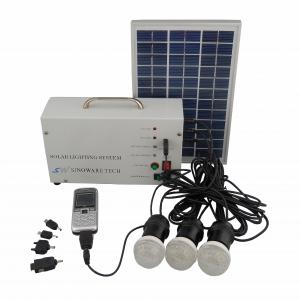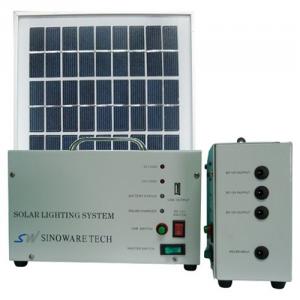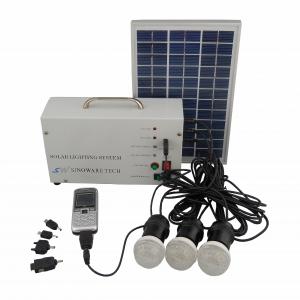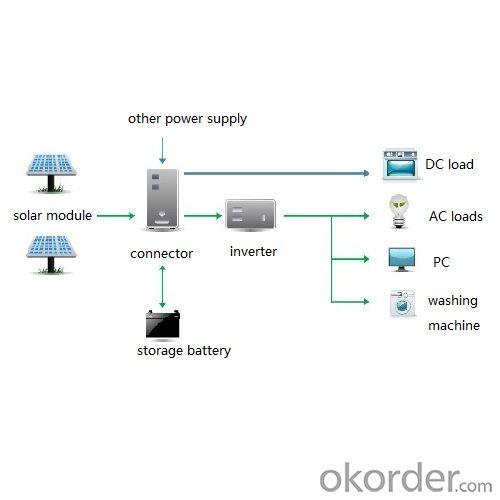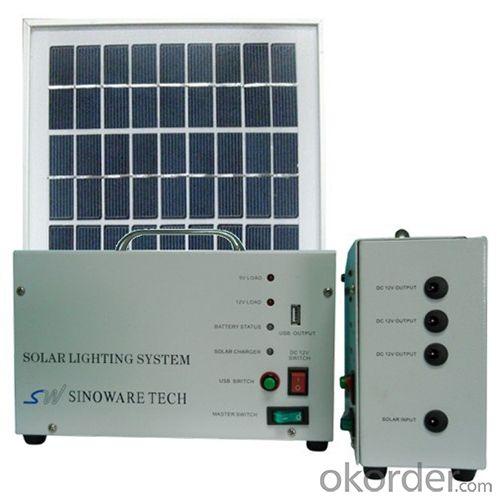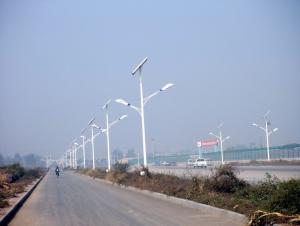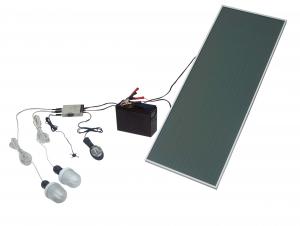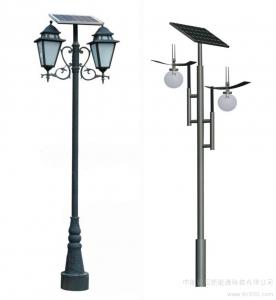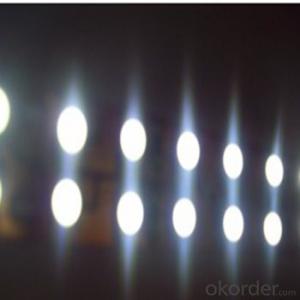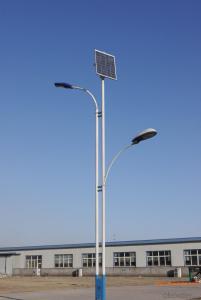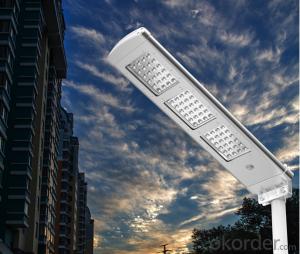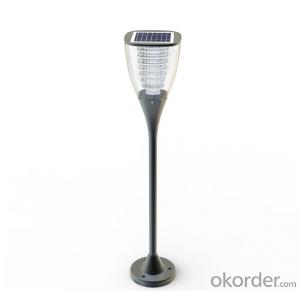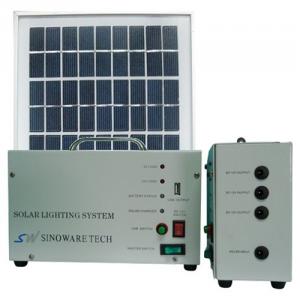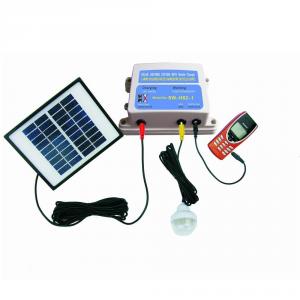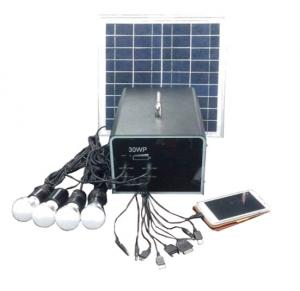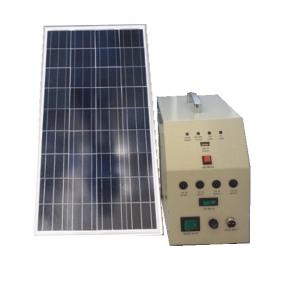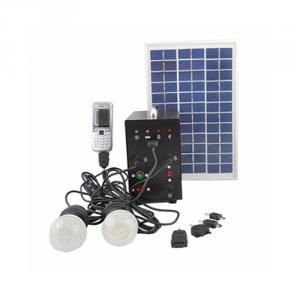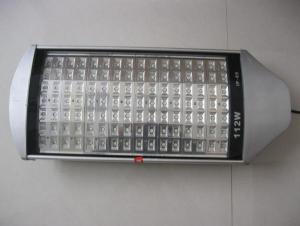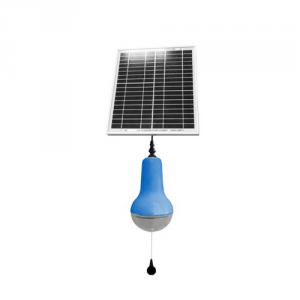Regal Art & Gift Solar Light - China Manufacture 8W 18V Solar Panel 1A Battery Solar System with Mobile Charge Cell Phone Charger
- Loading Port:
- Shenzhen
- Payment Terms:
- TT
- Min Order Qty:
- 1000Sets set
- Supply Capability:
- 1000 SETS Per Month set/month
OKorder Service Pledge
OKorder Financial Service
You Might Also Like
This 8w 18v solar panel 1a battery solar system with mobile charge cell phone charger is manufactured by China factory located in shenzhen (Shenzhen FOB) with certificate of ISO9001 CE ROHS 1.5 year warranty. Safety and easy installation, plug and play systems; good quality panel to ensure the high efficiency and long life needs; The system is very convenient to use and install with 100% solar powered energy.
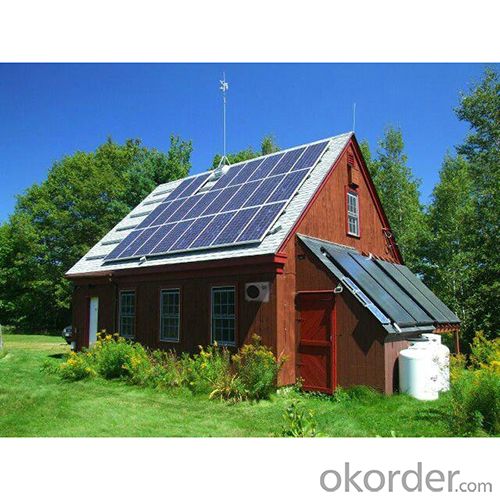



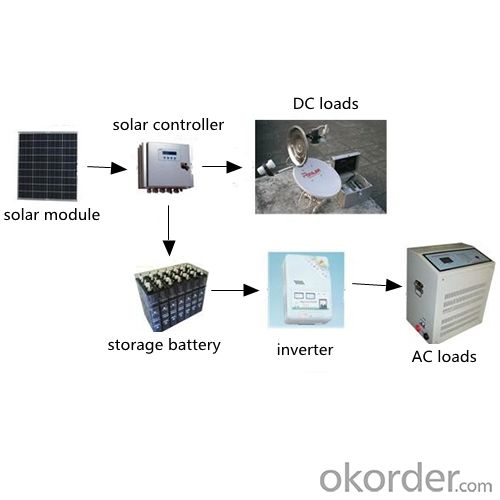
Features
Solar Panel: 8W/18V Polysilicon panel with 5M cable
SMF lead Acid Battery: 12V/4.5Ah
Lamp: 2pcs LED lamp,1pcs 12V/1W LED & 1pcs 12V/3W LED with 3M cable
Output Interface:4pcs (1 USB Port,3 for DC)
Charging Time: Around10 hours to full charge
Lighting Time:
Around 15 Hours for 3pcs 1W led light after full-charged
Around 7 Hours after one-day charged
Certificate: CE, RoHS; ISO9001
Warranty period: 1.5 years.
REMARK: The price including solar panels and power system ONYL. the solar bracket and others accessories are not contained
Usage/Applications
Usage/Applications
This solar lighting system is ideal for places with no mains electricity such as outhouses, sheds, garages, farms, stables, as well as for camping, travel and any outdoor activities (e.g. a for a yurt).
Home lighting/House lighting,
Remote area, mountainous area, desert area, grassland area,
Village, country area,
Camping, outdoor activities, travel,
Lighting at night.
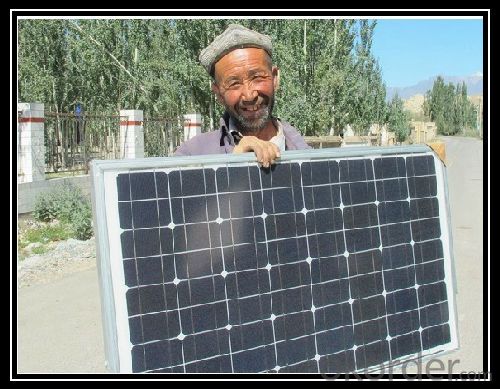
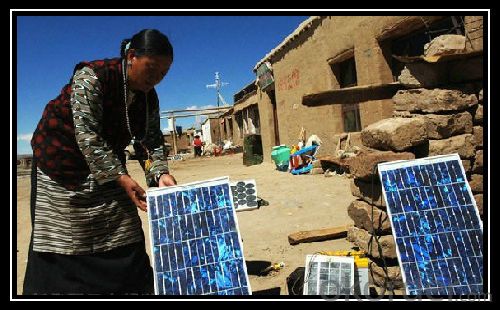



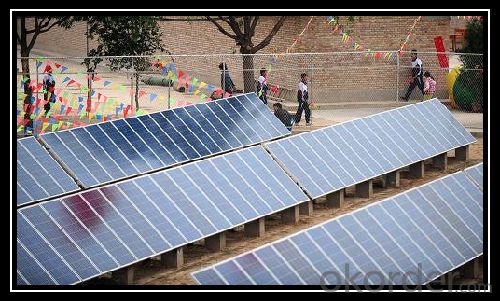
Customized options
1. This solar system is available for custominzing all colors of system shell or LED light color.
2. This solar system can be customized as remote control , with mobile charge, with radio function or MP3 player function.
3. It's also available to customize your own solar systems , solar lanterns, or any solar lighting products by giving us picture or draft or technical datas.

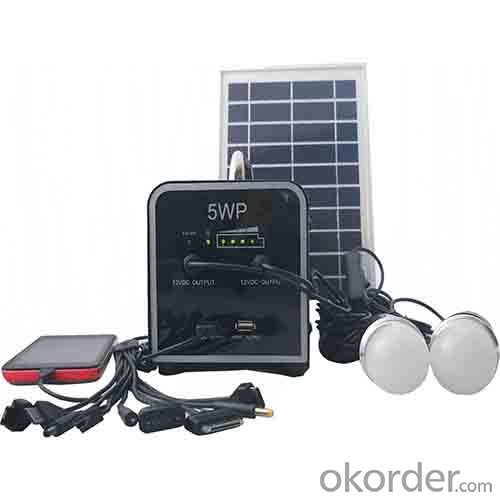
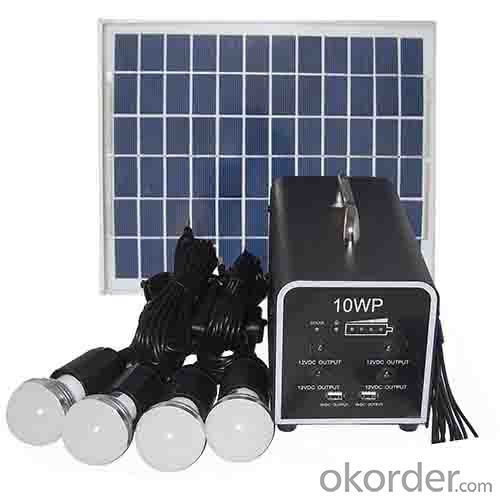
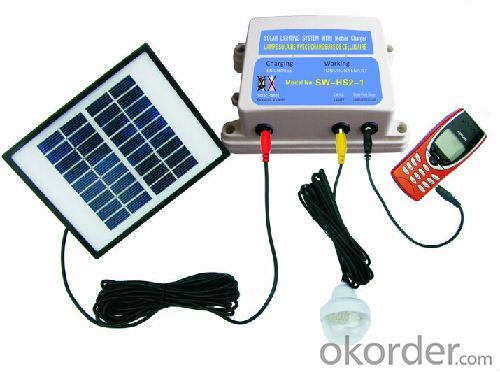
Packing & Delivery
Package:
1 x panel
1 x system box
Delivery:
|
Shipping Service |
Estimated Delivery Time |
|
DHL |
2-8 business days |
|
FedEx |
3-8 business days |
|
TNT |
2-10 business days |
|
UPS |
1-7 business days |
|
EMS |
6-14 business days |
|
ePacket |
7-12 business days |
|
China Post Air Mail |
7-15 business days |
|
China Post SAL |
14-30 business days |
|
Air freight |
3-10 business days |
|
By Sea |
30-40 business days |
1. 3-5 business days for Sample Orders; 7-30 business days for Bulk Orders for Bulk Orders.
2. "Business days" means Monday-Friday, excluding holidays.
3. DHL and UPS cannot ship to military or P.O. boxes address
4. The Shipping Service above is for reference only, for any other questions, please feel free to contact us.
Factory
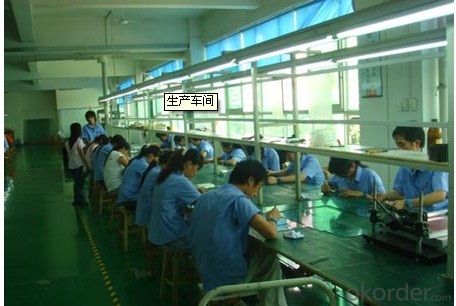

- Q: Can solar lights be used to deter pests?
- To some extent, pests can be deterred by solar lights. Emitting bright light, solar lights can ward off nocturnal animals like raccoons, skunks, and possums who tend to avoid well-lit areas. By making these creatures feel exposed and vulnerable, the lights discourage them from trespassing on your property. Furthermore, solar lights equipped with motion sensors can startle and drive away pests upon detecting movement. Nonetheless, it is important to recognize that solar lights alone may not completely eradicate pest issues, particularly with smaller critters like mice or insects. Achieving more effective results can be attained by combining solar lights with other pest control methods such as traps, repellents, or fencing.
- Q: Do solar lights produce any heat?
- Yes, solar lights do produce some heat, but the amount is significantly less compared to traditional incandescent or fluorescent lights. The primary source of heat in solar lights comes from the conversion of sunlight into electricity, which generates a small amount of heat. However, this heat is generally negligible and does not pose any significant risk or discomfort.
- Q: Are solar lights affected by power outages?
- No, solar lights are not affected by power outages since they rely on solar energy to operate.
- Q: How do solar lights handle voltage drops over long cable distances?
- Solar lights typically have built-in voltage regulation mechanisms, such as charge controllers, to handle voltage drops over long cable distances. These charge controllers ensure that the solar panels receive a consistent and optimal voltage, regardless of the cable length or potential voltage drops. By regulating the voltage, solar lights can efficiently convert and store energy from the solar panels, allowing them to operate effectively even in remote locations with extended cable distances.
- Q: Are solar lights resistant to power surges or fluctuations?
- No, solar lights are not resistant to power surges or fluctuations as they rely on a steady and consistent flow of solar energy to operate effectively.
- Q: How do solar lights compare to generator-powered lighting systems?
- The advantages and disadvantages of solar lights and generator-powered lighting systems vary, depending on specific needs and circumstances. Solar lights, which are powered by the sun, offer a sustainable and environmentally-friendly option. They are simple to install and require minimal maintenance, as they lack any moving parts. In addition, solar lights do not emit greenhouse gases or create noise pollution, making them ideal for outdoor use in residential areas or public spaces. Conversely, generator-powered lighting systems generally offer greater power and a higher intensity of light compared to solar lights. They are often used in large outdoor events, construction sites, or areas where a substantial amount of light is required for an extended duration. Generators can be fueled by diesel, natural gas, or gasoline, providing a dependable source of energy even in areas without access to electricity. However, they necessitate fuel and regular maintenance, which can be expensive and may contribute to air and noise pollution. Regarding cost, solar lights entail a higher initial investment, as they require the purchase of solar panels and batteries. Nevertheless, they have lower operating costs in the long run, as they rely on free solar energy. Generator-powered lighting systems have lower initial costs but higher ongoing expenses, including fuel and maintenance. In terms of reliability, solar lights are dependent on the availability of sunlight, so they may not provide consistent lighting on cloudy or rainy days, or in areas with limited sunlight. On the other hand, generator-powered lighting systems can function regardless of weather conditions, as long as there is fuel available. To summarize, solar lights offer a sustainable and cost-effective solution for outdoor lighting, particularly in areas with access to sunlight. They are easy to install, require minimal maintenance, and have no negative impact on the environment. Generator-powered lighting systems, on the other hand, offer more power and reliability but come with higher costs and environmental concerns. Ultimately, the choice between the two depends on the specific requirements and circumstances of the lighting project.
- Q: How do I ensure proper placement of solar lights for optimal charging?
- To ensure proper placement of solar lights for optimal charging, there are a few key factors to consider: 1. Sunlight exposure: The most important aspect of solar light placement is ensuring they receive enough direct sunlight. Place the lights in an area that receives maximum sunlight throughout the day, preferably facing south in the Northern Hemisphere or north in the Southern Hemisphere. Avoid placing them under trees, buildings, or any other structures that can cast shadows and obstruct sunlight. 2. Angle and tilt: The angle and tilt of the solar lights can affect their charging efficiency. Adjust the angle of the solar panels to match the latitude of your location. In general, the optimal tilt angle is equal to the latitude minus 15 degrees in the winter and plus 15 degrees in the summer. This allows the solar panels to capture sunlight at the most effective angle for charging. 3. Clear panels and regular cleaning: Keep the solar panels clean and free from dust, dirt, or debris. Regularly wipe the panels with a soft cloth or sponge to ensure maximum light absorption. Dirty or obstructed panels can significantly reduce the charging efficiency of solar lights. 4. Avoid any obstructions: Make sure there are no obstructions blocking the path of sunlight to the solar panels. Trim any overhanging branches or vegetation that might shade the lights. Also, ensure that neighboring structures or objects do not cast shadows on the solar panels during the day. 5. Optimal distance between lights: If you have multiple solar lights, try to space them out adequately to avoid shading or competition for sunlight. This will ensure each light receives sufficient sunshine for optimal charging. 6. Seasonal adjustments: Keep in mind that the sun's angle changes throughout the year due to the Earth's tilt. Consider adjusting the tilt angle of the solar lights seasonally to compensate for this change and maximize their charging potential. By following these guidelines, you can ensure proper placement of solar lights for optimal charging, allowing you to enjoy bright and efficient lighting throughout the night.
- Q: Can solar lights be used for outdoor fitness areas or gymnasiums?
- Absolutely! Outdoor fitness areas or gymnasiums can definitely make use of solar lights. In fact, they can serve as a fantastic alternative to conventional electric lights in such locations. The concept behind solar lights is to capture energy from the sun and convert it into usable electricity to power the lights. As a result, there is no need for any electrical wiring or access to the power grid, making them incredibly versatile and easy to install outdoors. Moreover, solar lights are remarkably efficient and capable of providing ample illumination for these spaces. They are equipped with photovoltaic panels that absorb sunlight during the day, charging the internal batteries. These batteries then supply the lights with power during the night, ensuring consistent and reliable lighting throughout the evening. Additionally, solar lights are environmentally friendly and sustainable. They do not emit any harmful substances or contribute to greenhouse gas emissions, unlike traditional electric lights. By utilizing solar lights, outdoor fitness areas or gymnasiums can minimize their carbon footprint and foster a greener and more eco-conscious environment. Overall, solar lights represent a practical and feasible lighting solution for outdoor fitness areas or gymnasiums. They offer convenience, efficiency, and sustainability, making them an outstanding choice for these settings.
- Q: Can solar lights be used for outdoor classrooms or educational spaces?
- Yes, solar lights can definitely be used for outdoor classrooms or educational spaces. They are a great alternative to traditional lighting options as they are energy-efficient, cost-effective, and environmentally friendly. Solar lights can provide ample lighting for outdoor learning areas, allowing students and teachers to comfortably engage in educational activities even after sunset. Additionally, the use of solar lights can also serve as an educational tool, teaching students about renewable energy and the importance of sustainability.
- Q: How do I choose the right color temperature for solar lights?
- When choosing the right color temperature for solar lights, you should consider the desired ambiance and functionality of the lighting. Warmer color temperatures, around 2700K-3000K, create a cozy and inviting atmosphere, ideal for outdoor living spaces or decorative lighting. Cooler color temperatures, around 4000K-5000K, provide a brighter and more focused light, suitable for security purposes or task lighting. Ultimately, the choice depends on your specific lighting needs and personal preference.
1. Manufacturer Overview
| Location | |
| Year Established | |
| Annual Output Value | |
| Main Markets | |
| Company Certifications |
2. Manufacturer Certificates
| a) Certification Name | |
| Range | |
| Reference | |
| Validity Period |
3. Manufacturer Capability
| a) Trade Capacity | |
| Nearest Port | |
| Export Percentage | |
| No.of Employees in Trade Department | |
| Language Spoken: | |
| b) Factory Information | |
| Factory Size: | |
| No. of Production Lines | |
| Contract Manufacturing | |
| Product Price Range | |
Send your message to us
Regal Art & Gift Solar Light - China Manufacture 8W 18V Solar Panel 1A Battery Solar System with Mobile Charge Cell Phone Charger
- Loading Port:
- Shenzhen
- Payment Terms:
- TT
- Min Order Qty:
- 1000Sets set
- Supply Capability:
- 1000 SETS Per Month set/month
OKorder Service Pledge
OKorder Financial Service
Similar products
Hot products
Hot Searches
Related keywords
